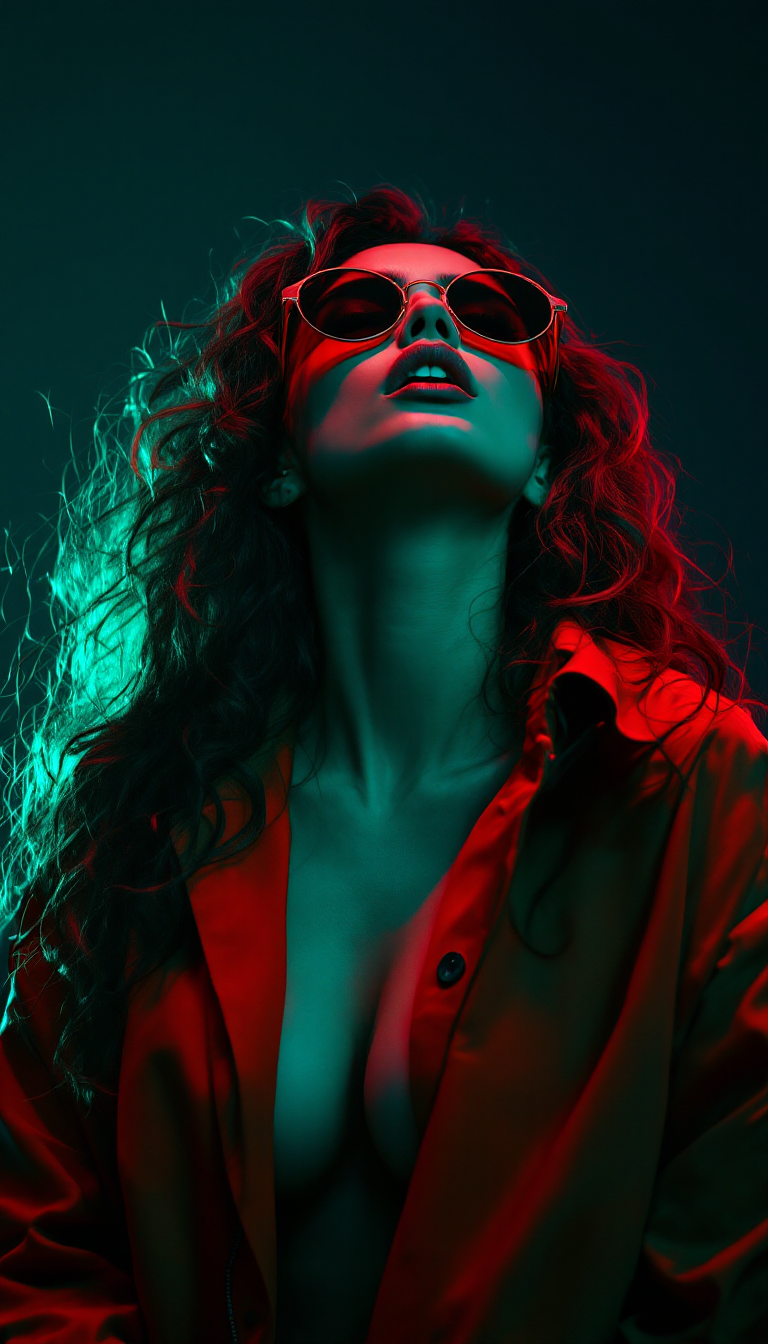2 months ago
texture Fashion editorial style expressionist cinematic photo A cyber-fashion inspired Asian woman lying on a beach towel, wearing reflective chrome goggles and retro white headphones, sunlit skin glowing with a soft, natural tan. She has long black hair with straight bangs, full lips, and detailed tattoos on both arms. She wears a vibrant bikini top with futuristic cuts. The beach scene has a clear blue sky, umbrellas, and colorful towels, captured in cinematic detail. High-resolution, hyperrealistic textures, sharp contrast, vivid color grading, summer techwear aesthetic, styled like a fashion editorial shoot, natural light, modern body art, DSLR-level detail, realistic skin with tattoo, photo, selfie, 0.5, 0.5x, 0.5x selfie, zoomed out selfie, beach sand, futuristic music player connected to headphones Ideal beach sand should appear soft and finely granulated, with a smooth but subtly uneven surface that catches natural light well. In close-up shots, the grains should be individually discernible, ranging in color from warm beige to golden tones, adding warmth and realism to the scene. Slight impressionsâsuch as footprints, towel marks, or wind-swept patternsâcan enhance visual interest without overpowering the subject. The texture should avoid harsh clumps or wet, muddy patches unless the goal is to portray post-tide or storm effects. Proper lighting, particularly during golden hour, brings out the sand's natural grain and depth, creating a rich, tactile foreground that complements the broader beach atmosphere., RAW candid cinema, 16mm, color graded portra 400 film, remarkable color, ultra realistic, textured skin, remarkable detailed pupils, realistic dull skin noise, visible skin detail, skin fuzz, dry skin, shot with cinematic camera . 35mm photograph, film, bokeh, professional, 4k, highly detailed . raw, emotional, dynamic, distortion for emotional effect, vibrant, use of unusual colors, detailed . High fashion, trendy, stylish, editorial, magazine style, professional, highly detailed top down close-up


